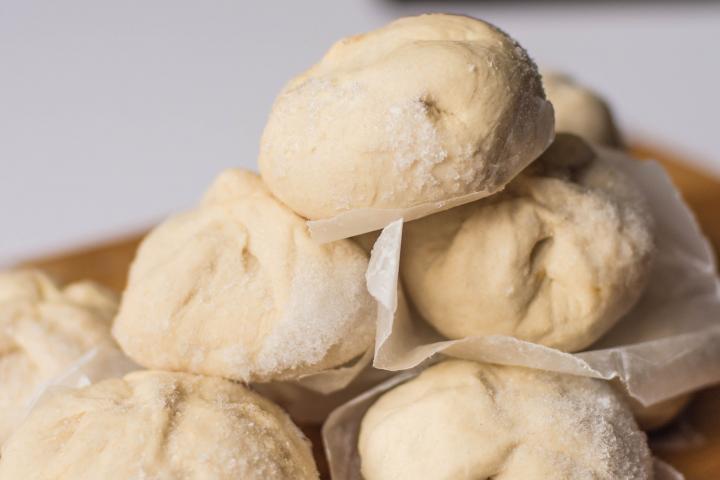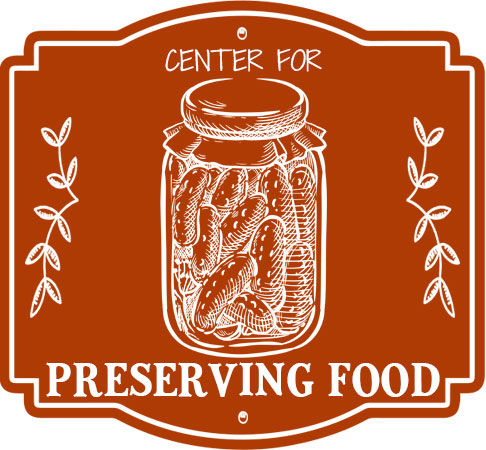How long should you keep food in your freezer? Time to clean it out? See this frozen food storage chart to find out whether you can freeze cheese, how long you can freeze chicken, how long uncooked meat keeps in the freezer, and much more. Plus, get advice on freezing foods the correct way to preserve quality.
Advertisement
Technically, frozen food will last forever if stored at 0 °F. However, we’re talking about safety here; foods will not be dangerous to eat.
However, food is all about taste. The color, flavor, and texture of food will start to deteriorate. For example, most food included cooked meet will keep for a few months before quality begins to suffer. No matter how well foods are packaged, air sneaks in and moisture gets sucked out; this results in freezer burn which affects texture and taste negatively. This is one reason why we recommend freezing in bags instead of stiff containers.
Below is a great chart for people who use the freezer often to store food for a long time. You might be surprised to find that you can freeze most foods much longer than you imagined without a loss in quality.
NOTE: These times assume that the freezer temperature is maintained at 0°F (-18°C) or colder. The storage times are for quality only. Frozen foods remain safe almost indefinitely.
How long can you freeze cheese for?
| Product |
Store in Freezer |
| All cheeses, except those listed below |
6 months |
| Cottage cheese, cream cheese, feta, goat, fresh mozzarella, Neufchâtel, Parmesan, processed cheese (opened) |
Not recommended |
How long can you freeze dairy products for?
| Product |
Store in Freezer |
| Butter |
6 to 9 months |
| Cream, half-and-half |
4 months |
| Ice cream |
1 to 2 months |
| Margarine (not diet) |
12 months |
| Milk |
3 months |
| Yogurt |
1 to 2 months |
How long can you freeze fish and seafood for?
| Product |
Store in Freezer |
| Clams, mussels, oysters, scallops, shrimp |
3 to 6 months |
| Fatty fish (bluefish, mackerel, perch, salmon) |
2 to 3 months |
| Lean fish (flounder, haddock, sole) |
6 months |
How long can you freeze fresh fruit for?
| Product |
Store in Freezer |
| All fruit (except those listed below) |
10 to 12 months |
| Avocados, bananas |
3 months |
| Citrus fruit |
4 to 6 months |
| Fruit Juices |
8 to 12 months |
How long can you freeze fresh vegetables for?
| Product |
Store in Freezer |
| Artichokes, eggplant |
6 to 8 months |
| Asparagus, rutabagas, turnips |
8 to 10 months |
| Bamboo shoots, cabbage, celery, cucumbers, endive, radishes, salad greens, watercress |
Not recommended |
| Beans, beets, bok choy, broccoli, Brussels sprouts, carrots, cauliflower, corn, greens, kohlrabi, leeks, mushrooms, okra, onions, parsnips, peas, peppers, soybeans, spinach, summer squash |
10 to 12 months |
| Tomatoes (overripe or sliced) |
2 months |
How long can you freeze meat for?
| Product |
Store in Freezer |
| Cooked |
2 to 6 months |
| Ham, hot dogs, and lunch meats |
1 to 2 months |
| Sausage, bacon |
1 to 2 months |
| Uncooked, ground |
3 to 4 months |
| Uncooked roasts, steaks, or chops |
4 to 12 months |
| Wild game, uncooked |
8 to 12 months |
How long can you freeze poultry for?
| Product |
Store in Freezer |
| Cooked |
4 months |
| Giblets, uncooked |
3 to 4 months |
| Uncooked |
12 months |
| Uncooked parts |
9 months |
How long can you freeze other foods for?
| Product |
Store in Freezer |
| Cakes |
4 to 6 months |
| Casseroles |
2 to 3 months |
| Cookie dough |
2 months |
| Cookies |
3 months |
| Fruit pies, baked |
2 to 4 months |
| Fruit pies, unbaked |
8 months |
| Pastry, unbaked |
2 months |
| Pumpkin or chiffon pies |
1 months |
| Quick breads |
2 months |
| Raw egg yolks, whites |
12 months |
| Soups and stews |
2 to 3 months |
| Yeast breads |
6 months |
| Yeast dough |
2 weeks |
Note: When freezing liquids or foods with liquid, be sure to leave space in the container for expansion.

Food-Freezing Tips
- To freeze or not to freeze? Foods that shouldn’t be frozen include eggs in shells and food in cans. (Once food is out of a can, it may be frozen.) Pressurized liquids also shouldn’t be frozen, as they can expand and burst.
- Freeze at 0°F (-18°C). To retain vitamin content, color, flavor, and texture, freeze items at peak freshness and store at 0°F or lower. Food stored constantly at 0°F will always be safe to thaw and eat; only quality suffers with lengthy freezer storage. (However, freshness and quality at the time of freezing will affect the condition of frozen foods.)
- Label foods for easy identification. Write the dish name/contents, number of servings (1 quart=4 servings; 1 pint=2 servings), and date on containers or bags.
- Freeze individually. To prevent sticking, spread food to be frozen (berries, hamburgers, cookies, etc.) on a cookie sheet and freeze until solid. Then place in plastic bags and into the freezer. Freezer burn happens when food isn’t stored properly in the freezer, causing moisture to escape and turn into ice crystals. Although the food is still edible, this coating of ice “burns” the food, causing it to have a drier texture and less flavor.
- Avoid freezer burn (ice crystals) by using plastic freezer bags instead of storage containers. You’ll often see a layer freezer burn with ice cream. Food with freezer burn is still edible but it has a drier texture and less flavor.
- Freeze for guests. Most cookies freeze well and thaw quickly—a convenience when entertaining. Simply cover a plate of assorted cookies with plastic wrap or aluminum foil and put it in the freezer.
- Freeze foods more quickly by placing them directly against the side of the freezer.
- Organize your freezer by food. Arrange the contents of the freezer by food category to make things easier to find and to minimize the time the freezer door is open.
- Leave the freezer be. If power is interrupted or if the freezer is not operating normally, do not open the freezer door unless absolutely necessary. Food in a loaded freezer will usually stay frozen for up to 2 days.
Refreezing Foods
- Once food has thawed in the refrigerator, it is safe to refreeze it without cooking, although there may be a loss of quality due to the moisture lost through defrosting.
- After cooking raw foods which were previously frozen, it is safe to freeze the cooked foods. And if previously cooked foods are thawed in the refrigerator, you may refreeze the unused portion.
- If you purchase previously frozen meat, poultry, or fish at a retail store, you can refreeze if it has been handled properly and kept at 40°F or below at all times.
Effects of Freezing
If frozen for too long, the quality of some foods will suffer. Here are some examples:
- Canned ham … will become watery and soft
- Cottage cheese, sour cream, cooked eggs, yogurt, mayonnaise … texture will suffer
- Crumb toppings … will become soggy
- Fried foods … may become rancid
- Home-stuffed whole poultry on carcass … may become contaminated due to freezing or thawing
- Lettuce, cabbage, radishes, green onions, celery … will become mushy
- Milk, cream, custard, and meringue filings … will separate
- Sauces heavy in fat … may separate or curdle
- Whipping cream … may not re-whip
If any food changes from its original color, this doesn’t mean that the food is unsafe to eat, but it’s a sign that it will not necessarily taste the same or it will lack flavor.
Learn More
Discover the best way to freeze blueberries! Plus, find out how to freeze other foods, such as cookies, corn, and spinach.
Do you have any freezer storage tips? Let us know in the comments!












Comments